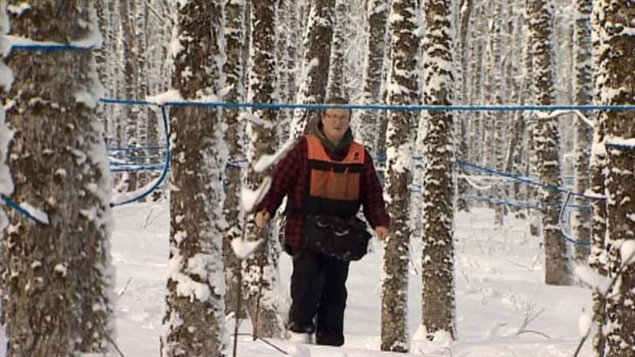Recent studies have shown maple syrup to be an excellent and very healthy substitute to sugar. With its unique flavour, it also tastes delicious and adds that unique flavour to recipes.
And, it’s almost uniquely Canadian.
While the north-eastern US states provide about 20% of the world’s maple syrup, almost all the rest comes from central and eastern Canada.
However, producers in both counties are still getting a little nervous. In the past few years, producers in eastern Canada and the north-eastern US states have noticed yields diminishing from their trees.
Nova Scotia producers say yield per tree is down about 25% from the level in the 1970’s and although they have thoughts about why, they want solid evidence.
In 2012, Paul and Sandra Cunha, small-time producers on Pleasant River Bay, Maine in the US close to the southern edge of producing trees,noted “We tapped 150 trees, some had two taps, but we got the same amount of syrup as when we tapped 70 trees — about eight gallons,”
Meanwhile in Canada, professor Raj Lada from the Faculty of Agriculture at Dalhousie University’s Truro Campus, is studying the concern. He is looking at whether its something biological with the tree, or with climate change
Maple syrup is produced in the spring when the temperature goes below freezing at night, and above during the day. Ideal sap production therefore in the range of -5C to 5C. As soon as the trees start to bud, the sap changes taste and is no longer collected.
On the Agriculture and agri-food Canada website, climate change is discussed, saying there is an ongoing upward trend in temperatures
The website says. “Higher temperatures during the maple sugaring season could seriously impact the North American maple industry. Maple producers are already experiencing changes: increasingly earlier tapping dates, ever shorter seasons and radical changes in regional production.”
The agency says because of this the production could edge northward as presently colder areas get warmer,with a corresponding negative effect upon currently warmer regions at the southern edge of the production zone.
The agency site also says, “the thinner snow cover associated with climate change could be the most significant climate factor affecting maple production. Late accumulations in December and mid-winter thaws could freeze the ground and reduce sap flow. Climate data are already showing fewer days with snowfall over the past few decades. It also seems evident that freezing and thawing cycles are more significant than in the past. With the effect of climate change, extreme conditions could become more severe and frequent.”
In addition to looking at weather data in his study, Professor Lada is also taking a look at whether other aspects are at play, such as the size of the canopy and the strength of tree roots.
Another theory however comes from Keith Crowe who has worked in the syrup industry for over 60 years.
He says it may be the trees have been tapped for too long. “I I think subsequent tapping is slightly detrimental to the tree,” Crowe said. “I don’t think it’s ever as productive as it is in the initial stages in spite of the growth that might happen in the meantime.”
To make the delicious product, it takes about 40 litres of tree sap to be boiled down to one litre of syrup.







For reasons beyond our control, and for an undetermined period of time, our comment section is now closed. However, our social networks remain open to your contributions.